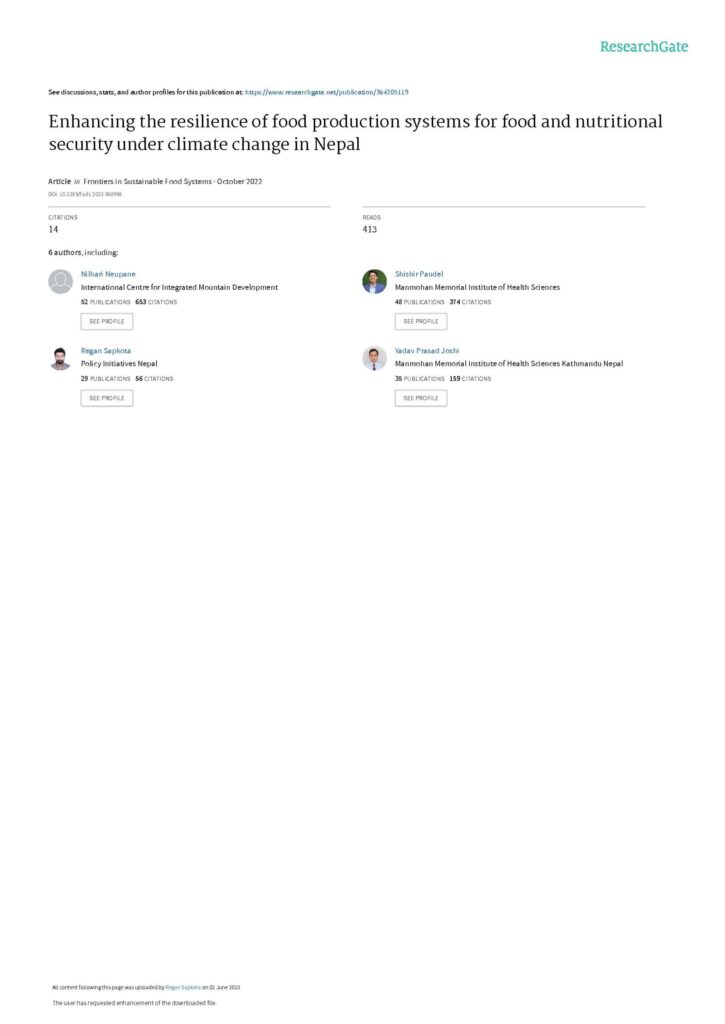Enhancing the resilience of food production systems for food and nutritional security under climate change in Nepal
Nilhari Neupane, Shishir Paudel, Regan Sapkota, Yadav Prasad Joshi, Yashoda Rijal, Anisha Chalise
Background: Climate change in Nepal has posed a considerable challenge
to agricultural productivity and has threatened food and nutritional security
at multiple levels. This study aims to assess the impacts of climate change
on national food production and food and nutritional security as well as
document issue-based prioritized adaptation options for a resilient food
production system.
Methods: This study considers temperature, precipitation, and their anomalies
as the key factors aecting food production in Nepal. Nationwide precipitation
trends along with their association with the annual production of major cereal
crops in Nepal were assessed using data from the last three decades (1990–
2018). The annual productions of the major cereal crops were summed and
normalized to calculate production index scores in the districts. Scores were
plotted and visualized into maps using the R programming. In three ecological
regions, the distribution of flood and extreme rainfall events and cases of
malnutrition from 2005 to 2018 were plotted. The eects of climate change
and highest priority adaptation options at the district level were documented
through a review of national policies and literature studies and qualitative
research based on Focus Group Discussions (FGDs).
Results: Between 1990 and 2018, the overall average production of major
cereal crops in Nepal was increased by around 2,245 MT annually. In
the district level index analysis, the highest production score was found
for Jhapa and Morang while the lowest production score was found for
Humla. Cases of malnutrition in some districts coincided with flood and
heavy rainfall events, indicating that climate change and extreme climatic
events have a role to play in food production and security. Growing
drought-tolerant crops, changes in crop cycle, riverbed farming practices,
and development of short-term strategies, such as contingency crop
planning, changing plantation dates, plantation of short-duration varieties,
and evacuation schemes. Similarly, long-term strategies, such as encouraging
out-migration of population to safer locations, resettlement programs with
transformative livelihood options, and sustainable agricultural practices were
found to be key prioritized adaptation measures for a resilient food system.
Conclusion: In Nepal, climate change and the increasing frequency and
magnitude of extreme climatic events adversely aect the food production
system, which has become a serious threat to food and nutritional security. The
implementation of evidence-based practices to build a resilient food system
specific to climate-vulnerable hotspots at the district and local levels is the
nation’s current need.

